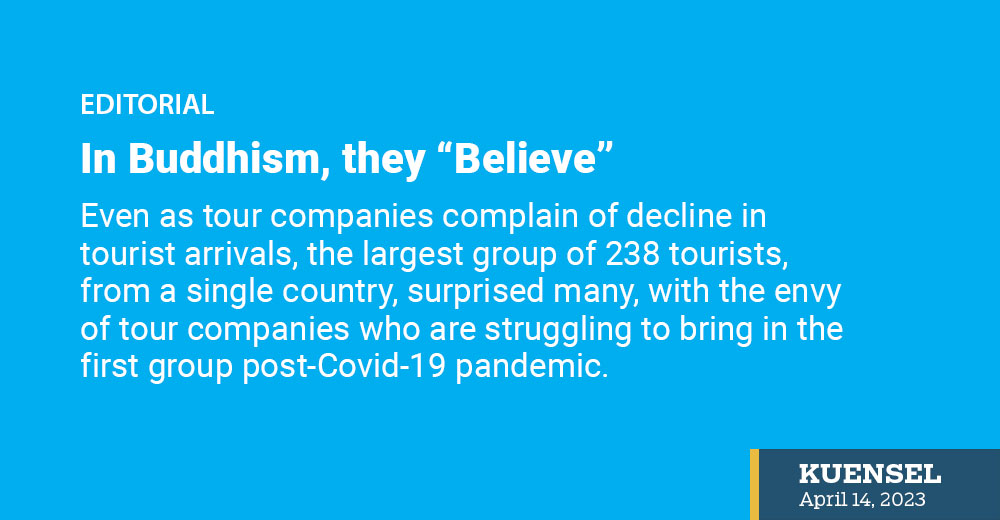Even as tour companies complain of decline in tourist arrivals, the largest group of 238 tourists, from a single country, surprised many, with the envy of tour companies who are struggling to bring in the first group post-Covid-19 pandemic.
The group from Vietnam, which Bhutan never targeted or expected as a potential source of tourists, are all SDF-paying tourists. The SDF was not an issue The group is on a pilgrimage to the last Mahayana Buddhist country. Their places of interest are the dzongs or monasteries including the famous Taktsang monastery. In the words of tour operators or guides, they are “cultural tourists.”
Such a large group may be a one-time occurrence, but the interest in Bhutan among Vietnamese, it seems, is growing. Last year, 110 visited Bhutan on pilgrimage. We may have not thought about marketing Bhutan as a pilgrimage destination, but Bhutan sure can believe it to be one.
We preserved and promoted Buddhism, cultures and traditions and the belief systems around it not to attract pilgrims. But it sure is the biggest selling point in today’s marketing context. Our ancestors, the leadership and the staunch believers who recognised religion or Buddhism as a part of life or as a part of Bhutan and Bhutanese helped us save Bhutan as a destination, if not one of the few today for those seeking refuge in Buddha dharma.
There are many sacred religious sites in the region. Hundreds of Bhutanese, some spending their life’s savings travel to Gaya, Ladakh, Nepal, or Sri Lanka on pilgrimage. It is the wish of children to fulfill the dream of the parents to at least visit, for example, Bodh Gaya, once in their lifetime. This is even if they have not visited half the nyes in the country.
As far as pilgrimage is concerned, Bhutan is a high-end destination even without commercializing our religion. The Vietnamese have discovered it. It is said that some rich Asians are willing to sponsor or fund the renovation, restoration and preservation of the rich religious culture and monuments. Some are helping create retreat centres, old age care for monks and are willing to even fund pension benefits for the monk body.
A visit to a dzong or a monastery is a must on the itinerary even for tourists coming to trek or watch birds in Bhutan. Quite often they leave impressed by the richness and uniqueness of our beliefs and how religion guides our normal daily lives.
If we are to promote Bhutan as a high-end destination, pilgrimage could be one. Beyond the dzongs, the teachings and the sacred sites, we could add value to make the pilgrimage meaningful and memorable. This could start with reskilling our guides to speak Thai, Vietnamese, Japanese or Korean, training chefs to cook simple and delicious vegetarian food and the capacity to attend to large groups of pilgrims. Not many Koenyers or caretakers could explain beyond the names of the statues. Those who know and can explain are lost in translation. Tour guides can come in, but not beneath the surface. Special packages to such large groups could make Bhutan affordable to many more.
Today it may be followers of a teacher. As words spread and we make them believe in Bhutan or Buddhism, there could be thousands more wanting to visit.


